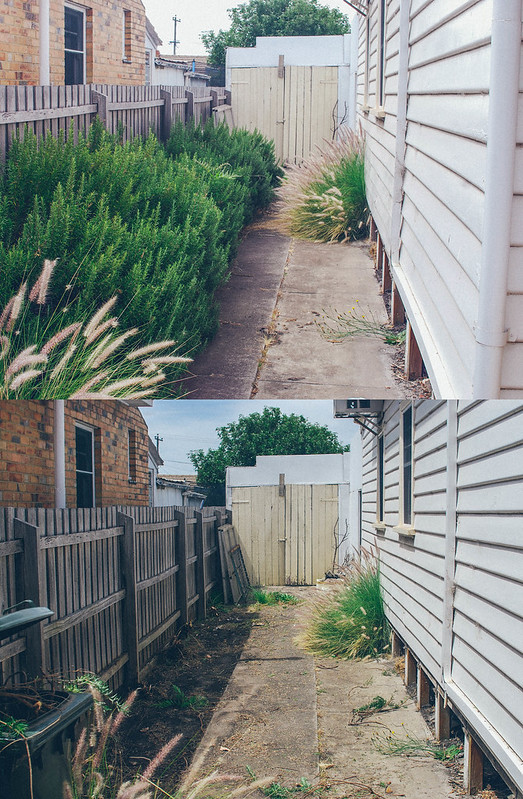I pulled out a rosemary hedge that’s been growing down the side of my house for a few decades, in about two hours. Not even the keenest lamb cook can eat that much rosemary and I still have a massive plant in the backyard to attract bees to pollinate more desirable food. It’s somehow emblematic of the life that I’m interested in. Where in the past I was probably more interested in whatever food flowed past the front of my house, over the past months, I have become more absorbed in looking inwards. Staring towards my backyard is more fulfilling than writing about eating outside.
Pulling out the rosemary had nothing to do with food, it was to enable a team of hazmat-suited asbestos removalists to back a truck down the driveway and give the impression that my house was cooking the largest batch of meth in the Western suburbs. If you live in a house built between 1920 and 1960 in Melbourne’s west, there’s asbestos in it, which isn’t a problem until you need to knock out a wall or drill some holes. Asbestos sheets sit dormant under the eaves, surrounds sagging sheds and provide structure for the mid-50s lean-tos that creep across Melbourne’s backyards.
It’s distributed across Melbourne in a map that reflects mid-century poverty. Being a cheap building material, the poorer a suburb was in the postwar era, the more asbestos is in it. Rich people only built their beach house with that cheap grey sheetrock. As the wave of gentrification sweeps across Melbourne’s inner suburbs, so too does asbestos removal. The garage and bungalow in my backyard were reduced to grey rectangles of cracked clay spotted with a veritable trove of zinc roofing nails, construction aggregate and broken shards of glass that my daughter calls “treasures”. A backyard in readiness for architecture.
I think this is why people quit food blogs, not so much because they’re less interested in food, but because their inward lives become more enthralling and less explicable. Work, kids, health, sex, politics: they’re more consuming than what you eat or at least, what you publish about what you eat. There’s bolognaise sauce bubbling on the stove while I’m writing this. As much as I know you want to pin it on Pinterest, nobody pins beige food. I’m not going to take a decent photo of it because people who style their own food aren’t worth knowing. I’d add nothing worthwhile to the world by publishing my vision for the perfect meat sauce but also I’m not at all interested in presenting some perfectly curated version of my new domesticity.
So how do you food blog an imperfectly curated life?
Part of the nostalgia for the blogging days of yore, before food blogs died, is to do with its low fidelity, the technical imperfections that made it seem more authentic. Apart from the dopamine bursts from endless information, this is what draws me more to Twitter and less to blogging. When you follow any group of people, it’s riddled with idiosyncrasy and when you know virtually nobody is paying attention to you most of the time, it gives you freedom to write a sentence about anything. It the past I would have written a few sentences of blog post about an interesting link; now it would be 120 characters of a tweet. Something was lost when this happened.
Like Steve Cumper has decided to embrace lo-fi in his food, I’m going to do the same with my blogging. More paring back to the things that I’d otherwise tweet about, like pulling out hedges and short-form, short-lived criticism, less 600 word missives like this one.

